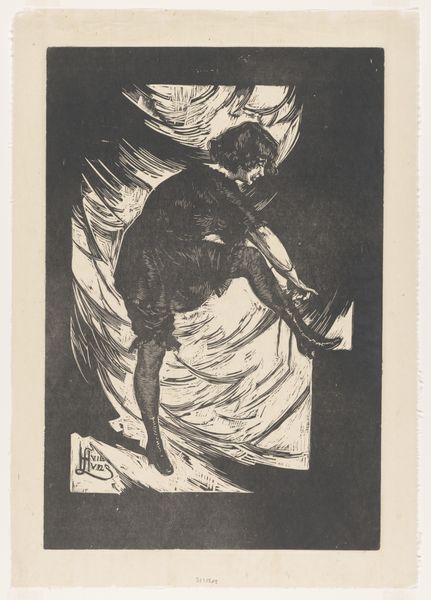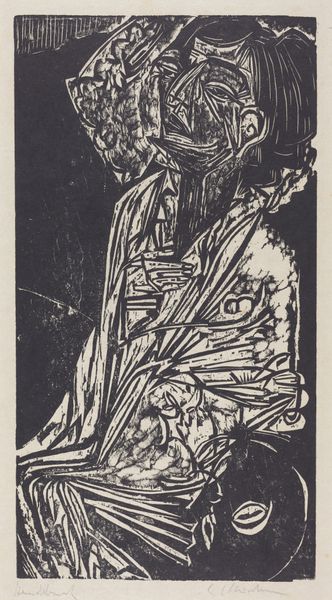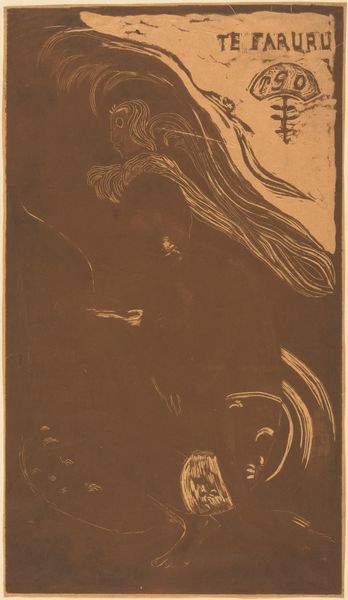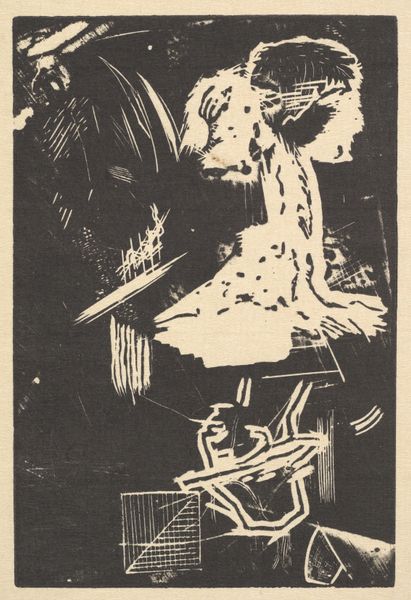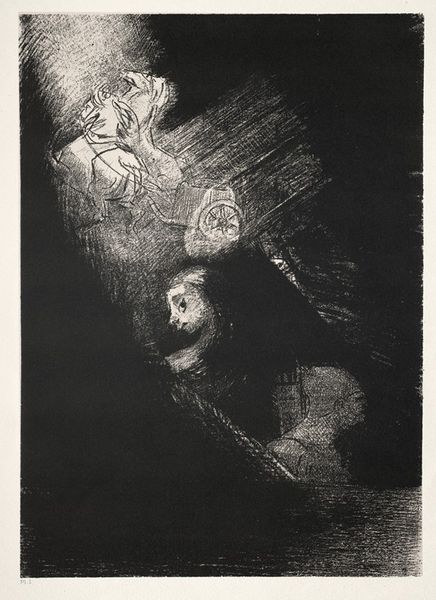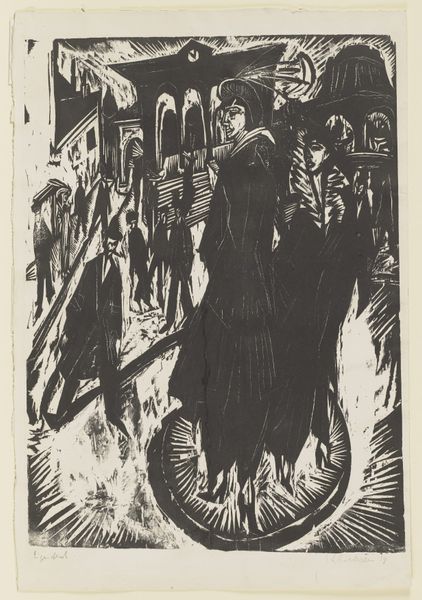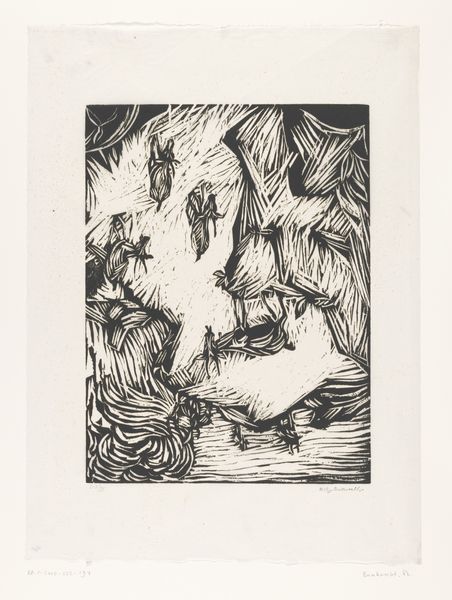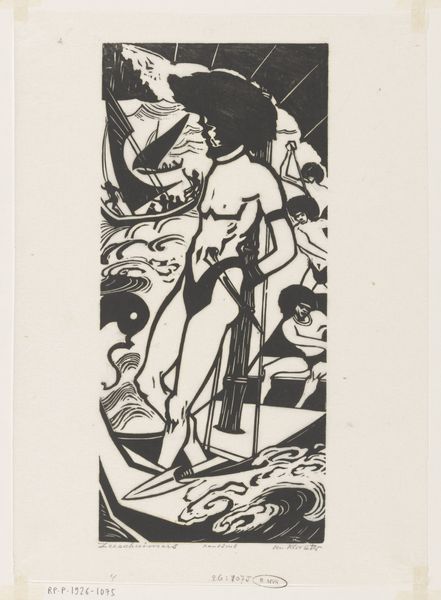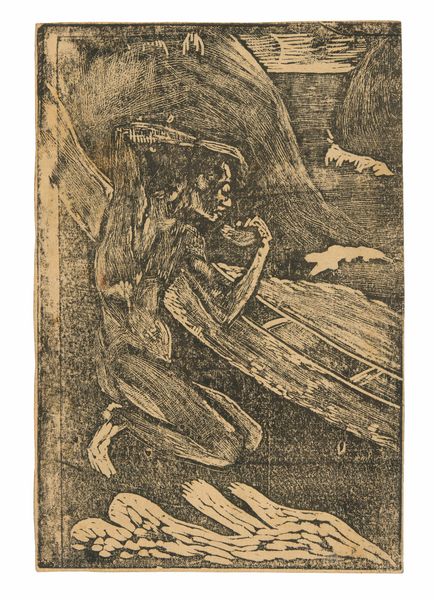
print, woodcut
#
narrative-art
# print
#
german-expressionism
#
figuration
#
expressionism
#
woodcut
#
abstraction
#
line
#
history-painting
Dimensions: 585 mm (height) x 432 mm (width) x 733 mm (height) x 505 mm (width) (None)
Curator: Wow, the stark contrast is the first thing that grabs me in Kathe Kollwitz's 1925 woodcut, “Hunger.” It's like a scream etched onto paper. What hits you immediately? Editor: The tangible process. The act of cutting away, the labour to create this stark image. You can almost feel the artist's hand guiding the blade, scraping at the wood. This intense darkness... it’s a density that presses down on the figures. Curator: It does. The figures are huddled at the bottom, consumed by shadow, barely delineated forms writhing. Then above them, skeletal hands with a whip—like Death is conducting this whole tragic scene. I can’t help but feel immense sorrow looking at it, imagining all those souls in anguish. Editor: Absolutely, and consider the materiality of this despair, no less than any other facet of this piece. This is printed on paper—a relatively cheap, widely available material—allowing for broad dissemination. So, Kollwitz explicitly brings themes of socio-economic disparities to our notice, quite physically. It's about the very real material lack, isn’t it? Not just a symbolic void, but bellies actually aching. Curator: It's powerful because of that rawness, that connection to something fundamental. You know, Kollwitz herself lived through tremendous hardship and loss. It gives her work this visceral quality, a refusal to shy away from pain. Each gouge in the wood, it almost feels like she's channeling generations of suffering. I'd imagine she conceived the entire creative and reproductive chain with specific aims. Editor: I agree; her social consciousness is undeniable, especially within the Expressionist movement where emotional expression and radical individualism were trending at the time. So, here she's using the language of line and form—a deliberate simplicity— to serve this stark realism of suffering she knows only too well. Every facet of this process embodies a protest and amplifies the subject’s anguish. Curator: A protest born of empathy. I’m moved thinking about how much intention she poured into her pieces, like “Hunger”. It definitely lingers with you. Editor: Precisely. Kollwitz transforms wood, ink, and paper into a monument, challenging us to witness this very tangible consequence of inequality. It serves as both historical documentation and ongoing call to social consciousness.
Comments
No comments
Be the first to comment and join the conversation on the ultimate creative platform.
